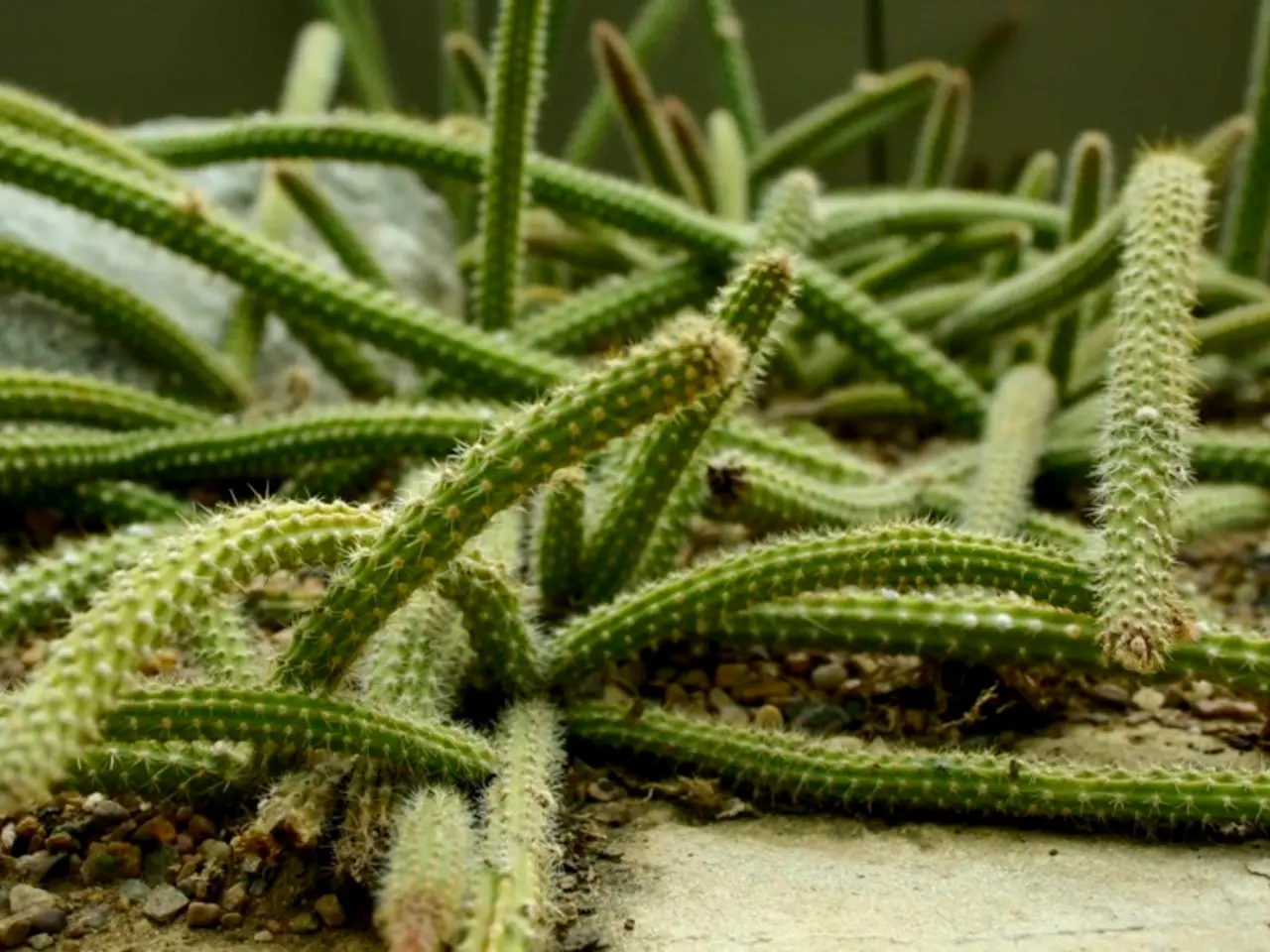Guide for Successful Cultivation of Daffodils!
================================================================================
Daffodils, scientifically known as Narcissus, are hardy flowering plants that make excellent additions to balcony and container gardens. These cheerful blooms can brighten up any space with their bright yellow, white, pink, and salmon blossoms. Here's a step-by-step guide on how to grow, care for, and maintain daffodils in a container garden.
Choosing and Preparing the Container and Soil
Select a container with good drainage holes to prevent waterlogging. Using a coffee filter at the drainage holes can help with proper root drainage and keep soil from escaping. Use a well-draining potting mix and ensure the container is deep enough (about 6 inches or more) to accommodate daffodil bulbs and root growth.
Planting the Bulbs
Plant daffodil bulbs root side down with the growth point facing up, at a depth of about 3 to 5 inches depending on the bulb size. Do not fertilize the planting hole initially; instead, you can mulch after planting to maintain moisture. Plant bulbs anytime from September to November to allow cooler soil temperatures to stimulate spring blooming.
Initial Watering and Placement
After planting, water the bulbs immediately and maintain watering daily for about three weeks to encourage root establishment. After sprouts appear, reduce watering frequency but keep the soil moist. Avoid submerging bulbs in water to prevent rot; keep the container in a cool, dark place for the first few weeks to encourage root growth if needed.
Sunlight Requirements
Place containers where daffodils can receive full sun (at least 6 hours of direct light) to support healthy growth and blooming. Since containers can be moved, adjust placement if needed to meet light requirements.
Watering in Growing Season
Potted plants typically dry out faster than garden soil, so during warmer months monitor moisture closely. Water the container as needed to keep soil consistently moist but not soggy. Terra cotta pots may require more frequent watering due to their porous nature.
Fertilizing
After initial planting, feed daffodils with a balanced, water-soluble fertilizer or a slow-release granular type to maintain nutrient supply and encourage blooms throughout the season.
Post-Bloom Care
Allow foliage to die back naturally; this process feeds the bulbs for next year’s growth. Avoid cutting leaves while still green. Maintain watering during this period if soil dries out.
General Maintenance
Mulch containers lightly to maintain moisture and regulate soil temperature. Repot or refresh soil as needed if bulbs become overcrowded or soil quality degrades. Moving heavy pots can be challenging, so plan container placement accordingly.
Avoid planting daffodils in areas with too much heat, as it can cause the shoots to be floppy and leggy. Daffodils have a lovely aroma, which is one of the reasons for their popularity. Daffodils come in a variety of colours and shapes, with smaller varieties known as 'Tete-a-Tete' thriving in containers.
In dry spring weather, water late-flowering daffodils. If the plants do not blossom, even when the leaves grow, it is known as 'daffodil blindness.' If bulbs aren't performing, use a low-nitrogen, high-potash fertiliser after flowering. In areas with too much shade, the plant may develop too slowly. Daffodils prefer acidic soil.
After the daffodils have faded, add bonemeal to the soil for next year's flowers. Relocate the container to another spot where it can fade and dry once the flowering is completed. When flowering becomes sparse or the clumps get congested, lift and divide them. To get rid of the dead plants, either cut them off at the base or twist and pull the leaves gently.
Any potting mix for normal houseplant use can be used for daffodils. Daffodils brighten up the spring garden with their bright yellow, white, or yellow-white blossoms.
- For optimal growth and blooming, daffodils should be planted in a deep container with good drainage, filled with a well-draining potting mix.
- To care for daffodils in a container garden, water them daily for three weeks after planting to encourage root establishment, then maintain moisture while reducing watering frequency during the growing season.
- During the growing season, daffodils prefer a sunny location with at least 6 hours of direct sunlight, but can be moved if needed to meet light requirements.
- To maintain nutrient supply and encourage blooms, daffodils can be fertilized with a balanced, water-soluble fertilizer or a slow-release granular type after initial planting.




